A Look at Maurice Logan’s Designs for the Southern Pacific Railway
The November 10, 2022, auction of Rare & Important Travel Posters includes the largest run of Maurice Logan posters that have ever been offered for sale at a single time—19 in all, including 18 from the collection of Victor Ryerson that were each commissioned for the Southern Pacific Railway. The additional Logan poster is a rare piece for the Canadian Pacific’s White Empress Route.
Although Logan also created advertising work for brands such as Morris & Company (a food brand), Fuller Paints, Bank of America, Pacific Gas Association, and Lucky Lager, he is almost entirely remembered as a poster designer for his work for Southern Pacific. While a complete accounting of Logan’s posters has never been compiled, this appears to be a near-complete run of the work he made for the railway. We could locate only three other posters he designed for Southern Pacific that are not featured in the November 2022 auction.
Early Career & the Society of Six
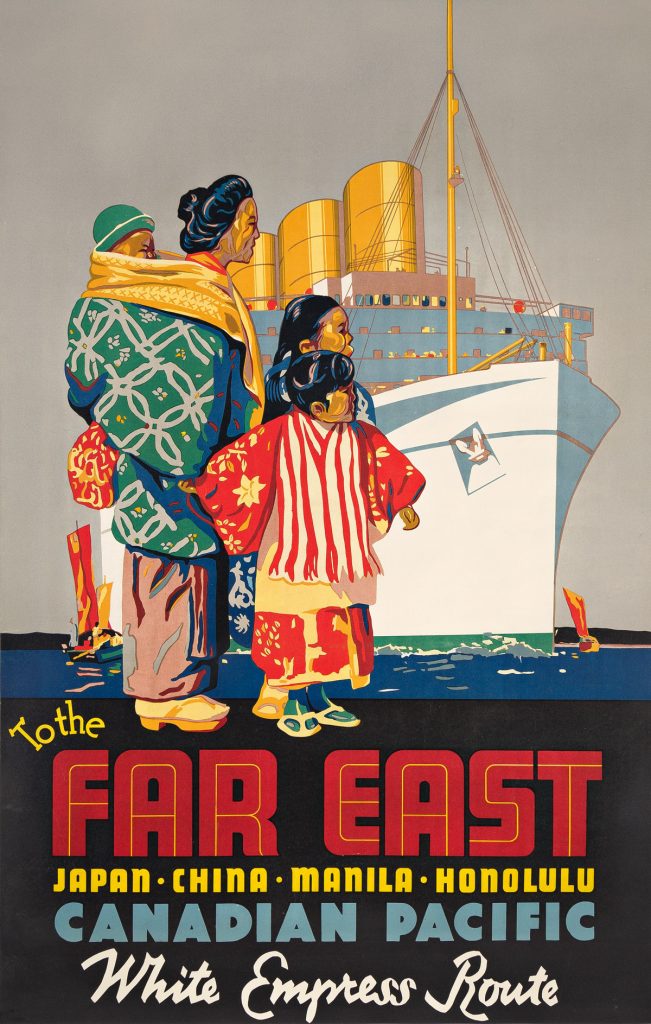
Left: Maurice Logan, To the Far East / Canadian Pacific / White Empress Route, 1936. Estimate $2,000 to $3,000.
Born in San Francisco, and working out of Northern California, Maurice Logan was a prominent commercial and fine artist. In 1917, he joined five other California painters to form the Society of Six, a group of artists whose work was categorized first and foremost by bold colors. “Considered outsiders in their time, their work is now recognized as part of the vital and enduring lineage of American art”.1 He also worked as a professor at the California College of the Arts, in addition to his memberships in the American Watercolor Society, the Society of Western Artists, the National Academy of Design, and the Society of Illustrators.
Southern Pacific Railway
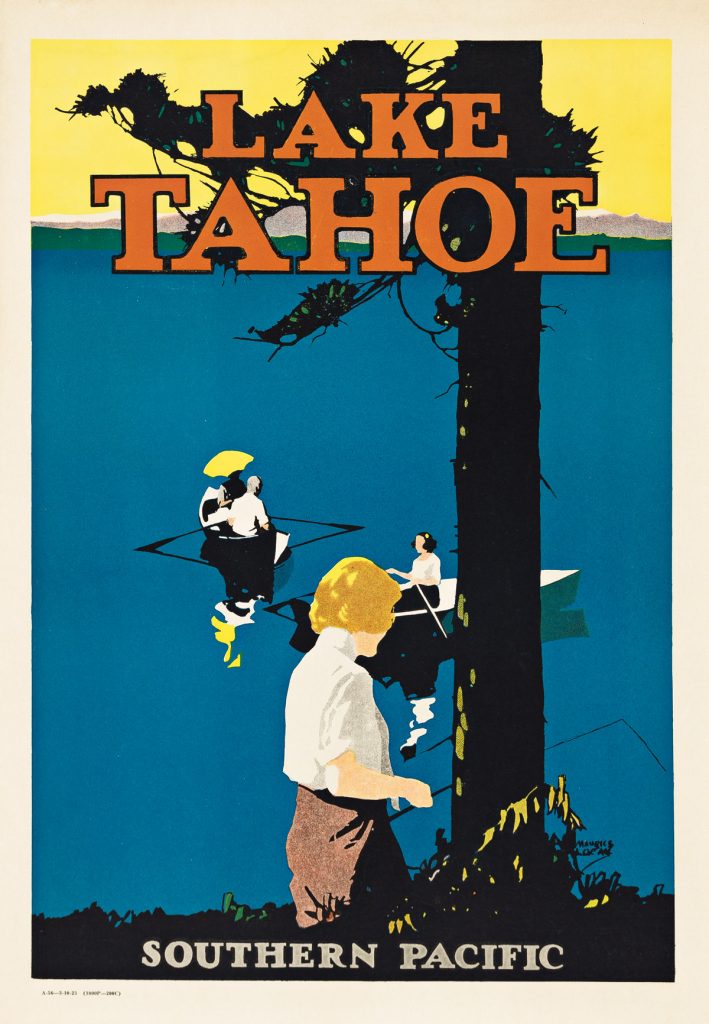
Right: Maurice Logan, Lake Tahoe / Sothern Pacific, 1923. Estimate $3,000 to $4,000.
In 1923, Maurice Logan began designing posters for the Southern Pacific Railway. The Southern Pacific Railway relied more on posters for advertising than any other railroad. “As the twenties progressed, [Southern Pacific] management gradually came to the realization that their line’s advertising would be more effective if it focused on a single memorable theme . . . California’s romantic appeal”.2 For his earliest images, such as Lot 106, “he used the flat color effects of the German poster technique, painting with bold colors and relying on color contrast for depth. The series depicted women in emblematic settings”.3 These early Southern Pacific posters, with their broad, flat planes of color and absence of outlining, are reminiscent of work by Ludwig Hohlwein.
In the 1920s and 1930s, as Logan continued his work with the railroad, his posters became less graphic and more painterly. “As [his campaign with Southern Pacific] progressed, Logan’s style also evolved . . . Concurrently, SP gave him free rein in both his poster style and selection of subjects . . . Logan’s palette increasingly emphasized the brilliant colors emblematic of the California landscape . . . he made increasing use of the impasto technique, applying heavy, textured swirls and strokes of oil paint to achieve depth and contrast”.4 These posters continue to depict scenery from the advertised destinations, and sometimes include locals engaging in everyday life and touring visitors. Some of these same poster images were also used on the covers of travel brochures disseminated by the railroad.
Logan’s later 1920s posters for Southern Pacific also feature the trains themselves, sometimes in the foreground, and sometimes enveloped by the scenery of the American landscape.
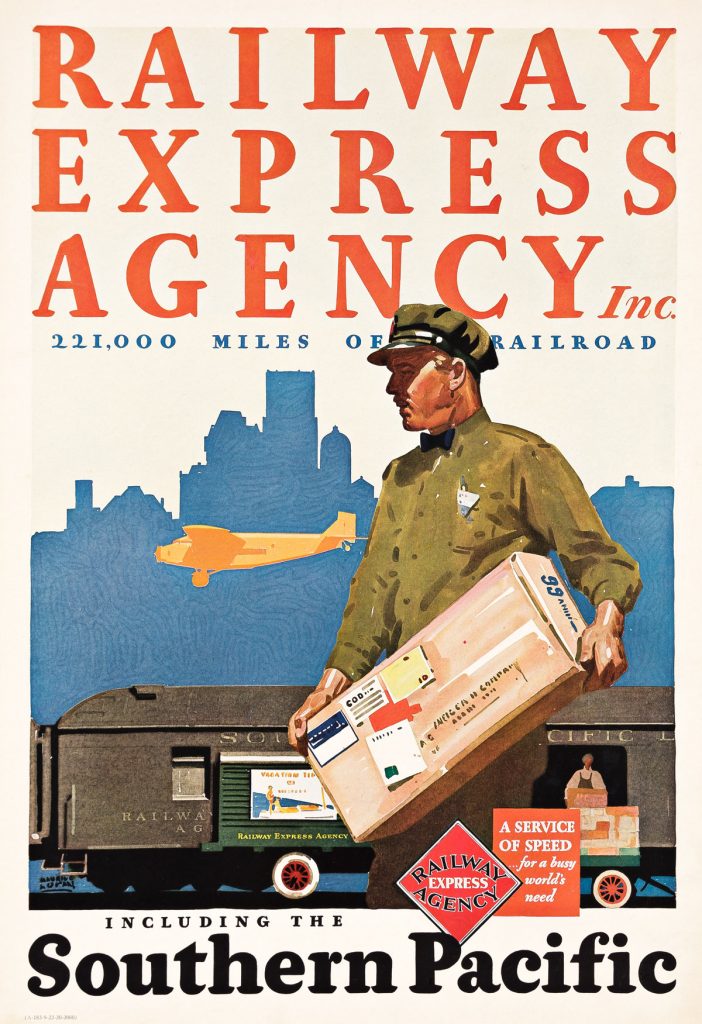
Left: Maurice Logan, Railway Express Agency Inc. / Southern Pacific, 1920. Estimate $1,500 to $2,000.
The run of Logan posters in this sale concludes with his advertisement for American Railway Express Inc. The parcels and goods delivery service was run by the U.S.government starting in 1918, but mainly owned by American Express.
Do you have an original vintage poster by Maurice Logan?
- Society of Six, Boas
- Travel by Train, Zega, p. 57
- Zega, p. 58
- Zega p. 61
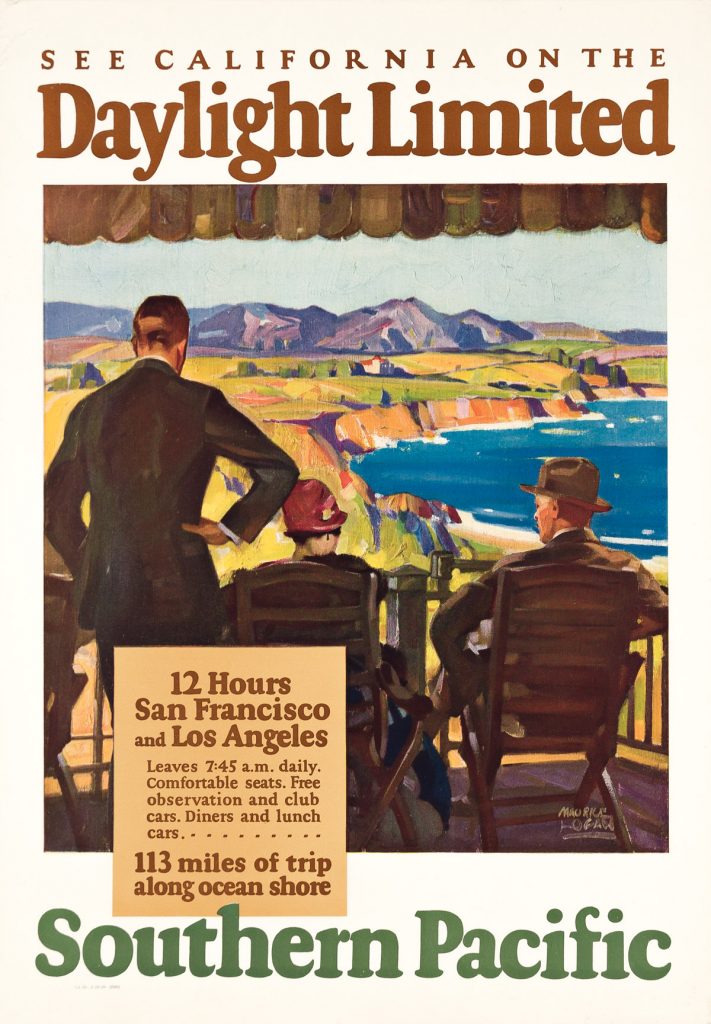
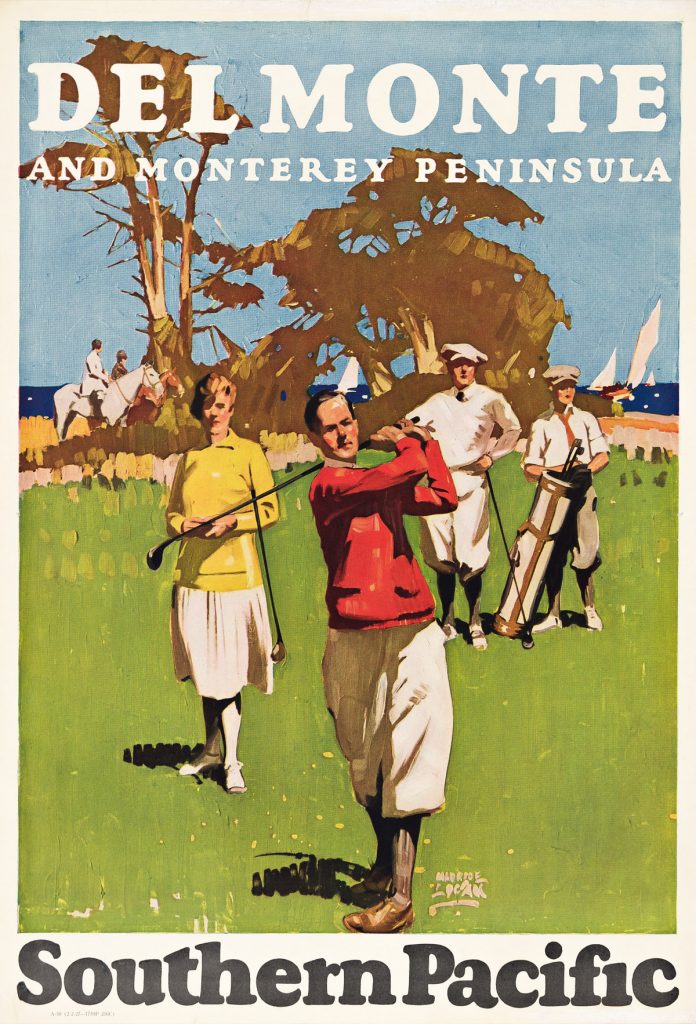
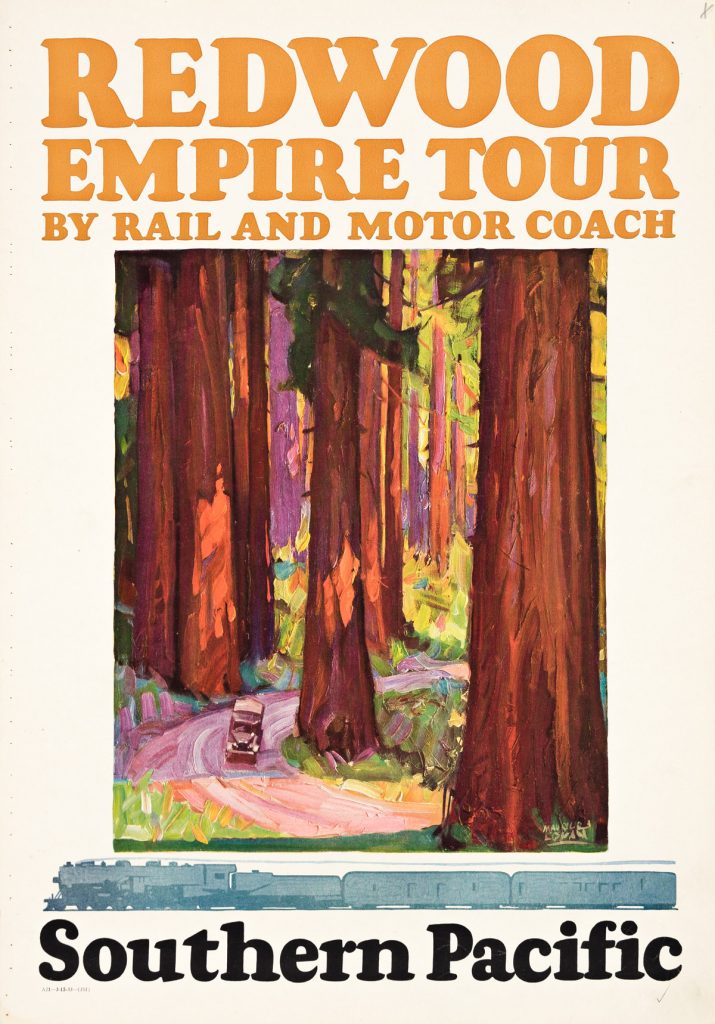
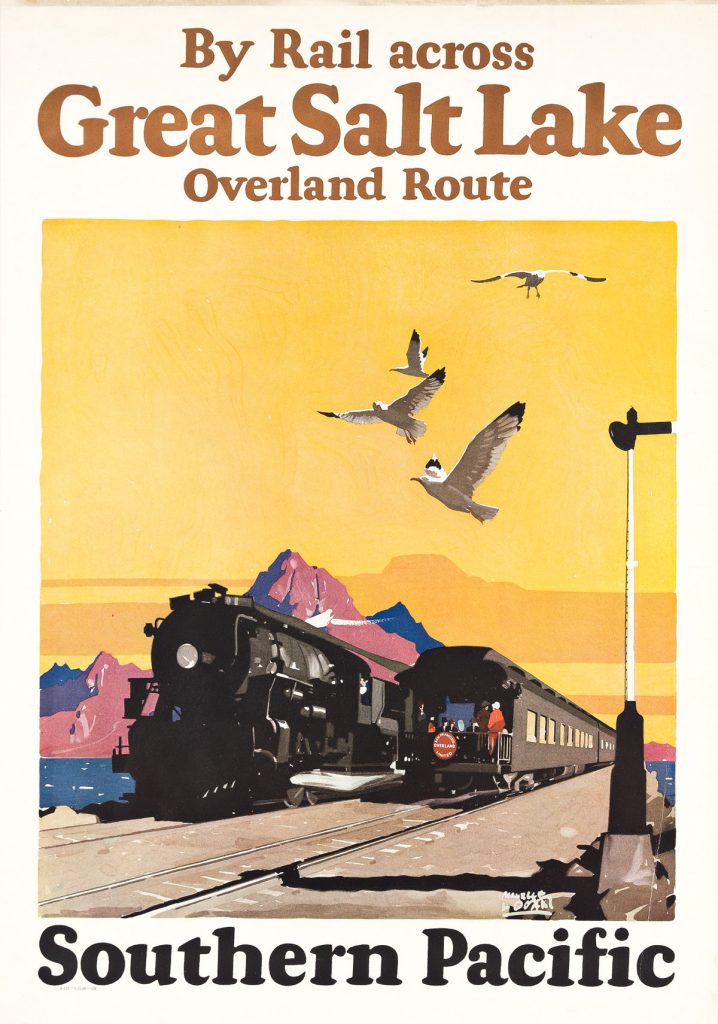
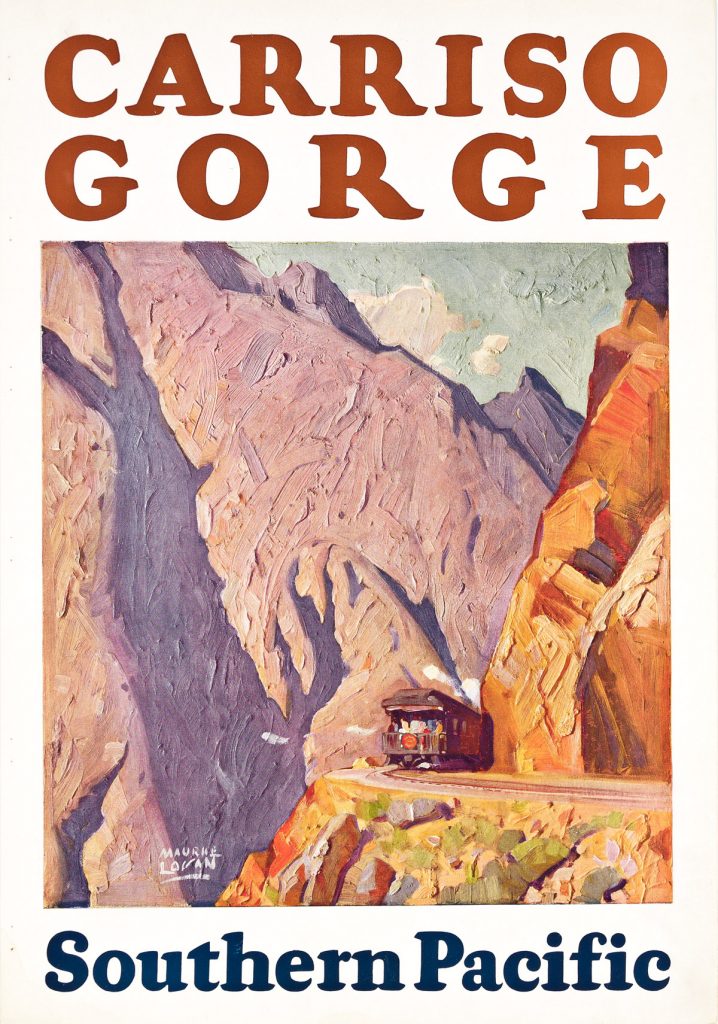
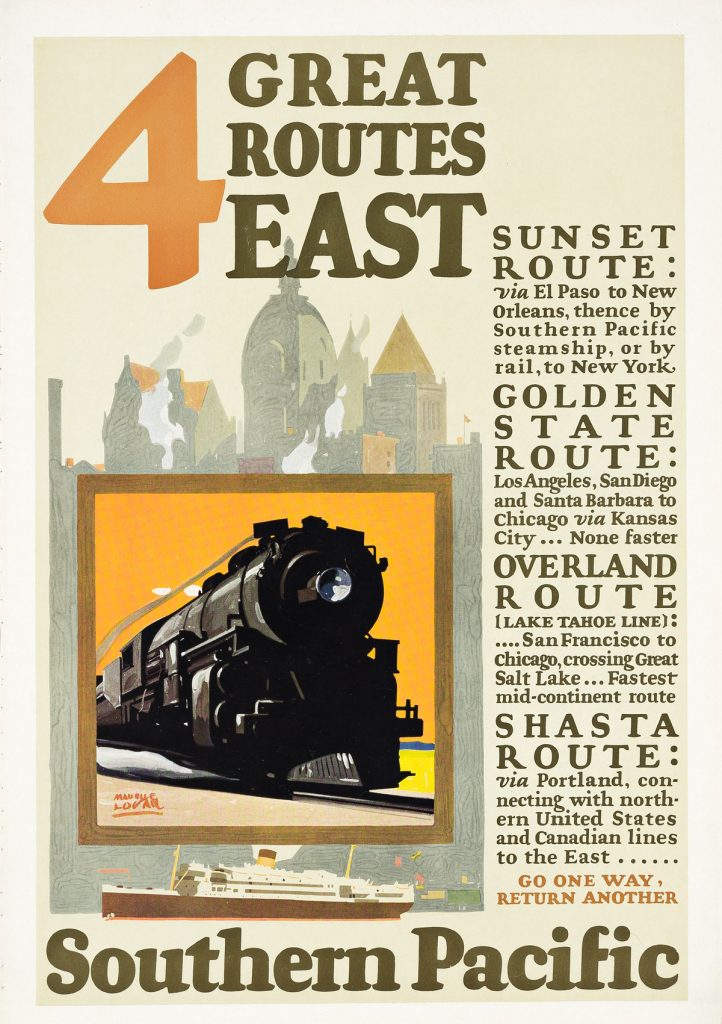
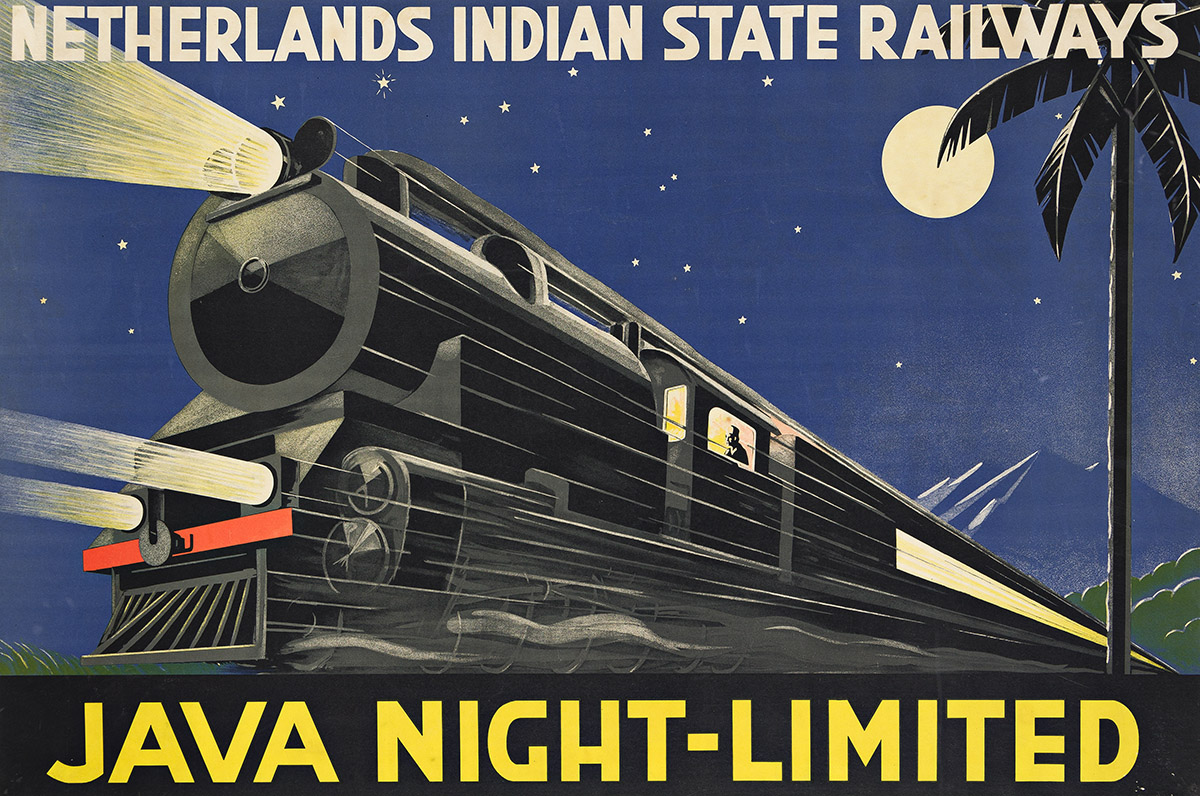
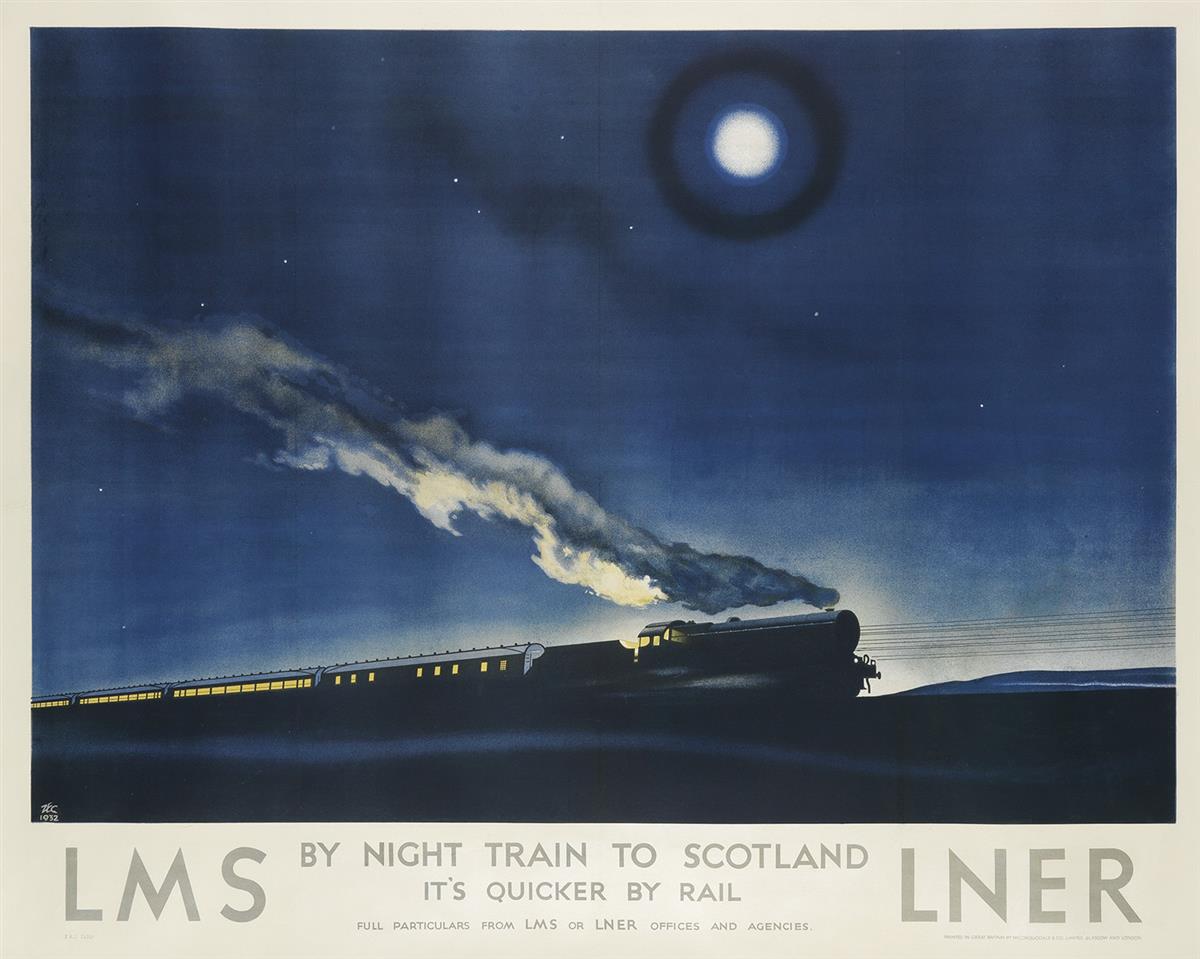







![Grace Meschery-McCormack shares about two copies of Fernando de Rojas’s ‘La Célestine,’ including a limited edition copy illustrated by Pablo Picasso.
At auction April 22. Learn more about the works at the link in our bio.
#Rarebooks #rarebookdealer #antiquarianbooks #auctions
_______________________________________
Music Credit:
Schubert - Piano Quintet in A major ‘The Trout’, D. 667 - IV. Andantino – Allegretto
Music provided by Classical Music Copyright Free on Youtube [https://tinyurl.com/visit-cmcf]
Watch: • Schubert - Piano Quintet in A major ‘...]](https://scontent-iad3-1.cdninstagram.com/v/t51.75761-15/491443494_18499096345036585_5935932878956098058_n.jpg?stp=dst-jpg_e35_tt6&_nc_cat=107&ccb=1-7&_nc_sid=18de74&_nc_ohc=m-4Ir9scQRgQ7kNvwF0EC_d&_nc_oc=Adk6vWHvJMH5TK67zw75jTpjO3KqV6u2qJzpfUwC4bmSaYLGiSmw5xfkUuplusJ5mI8&_nc_zt=23&_nc_ht=scontent-iad3-1.cdninstagram.com&edm=AM6HXa8EAAAA&_nc_gid=wZQQw6XoV_TKrT8-gFRP8Q&oh=00_AfFFcoa25Leistx0sOaapsk1WCrSIH4pC1NUAHr6rMUaLA&oe=680D0F11)








